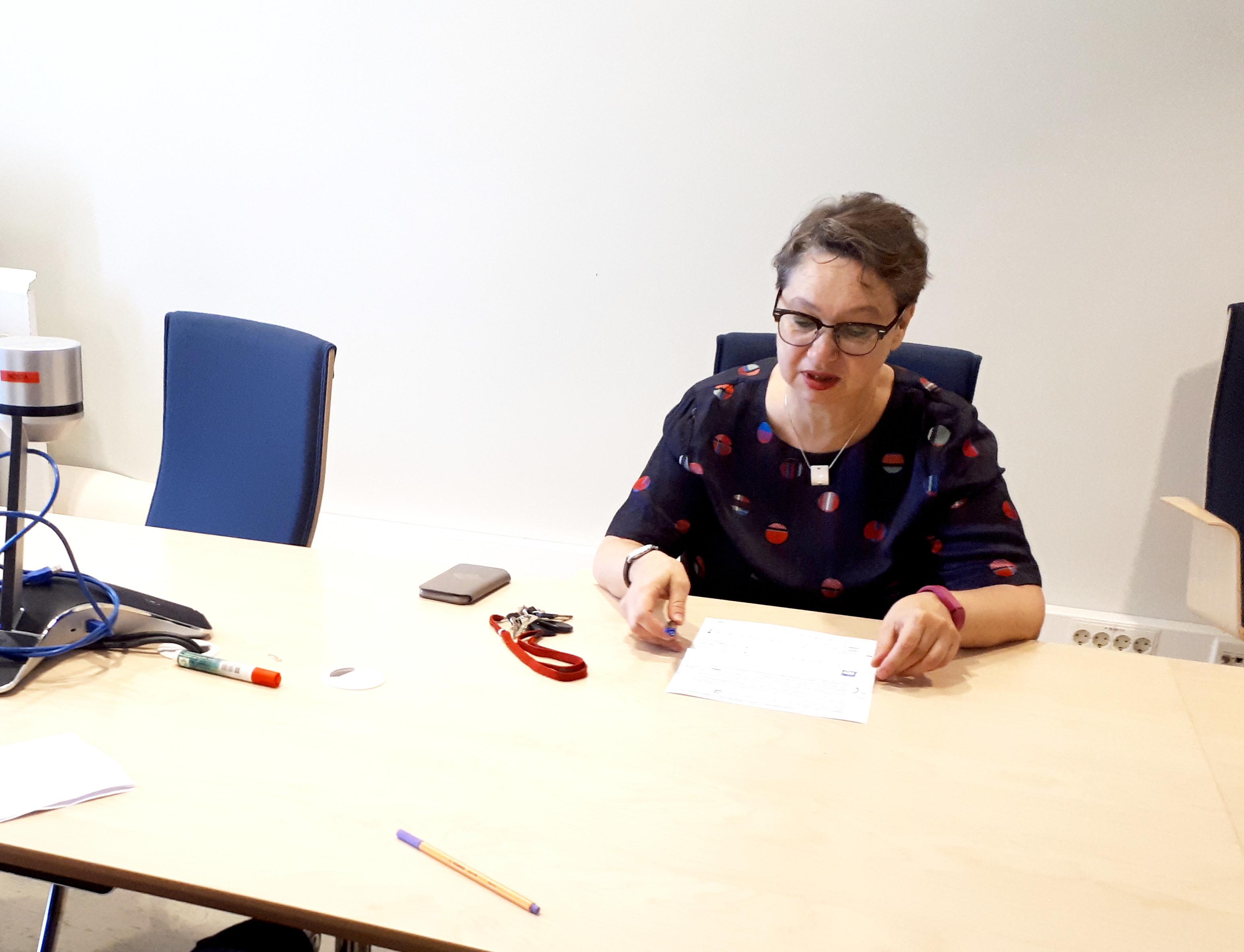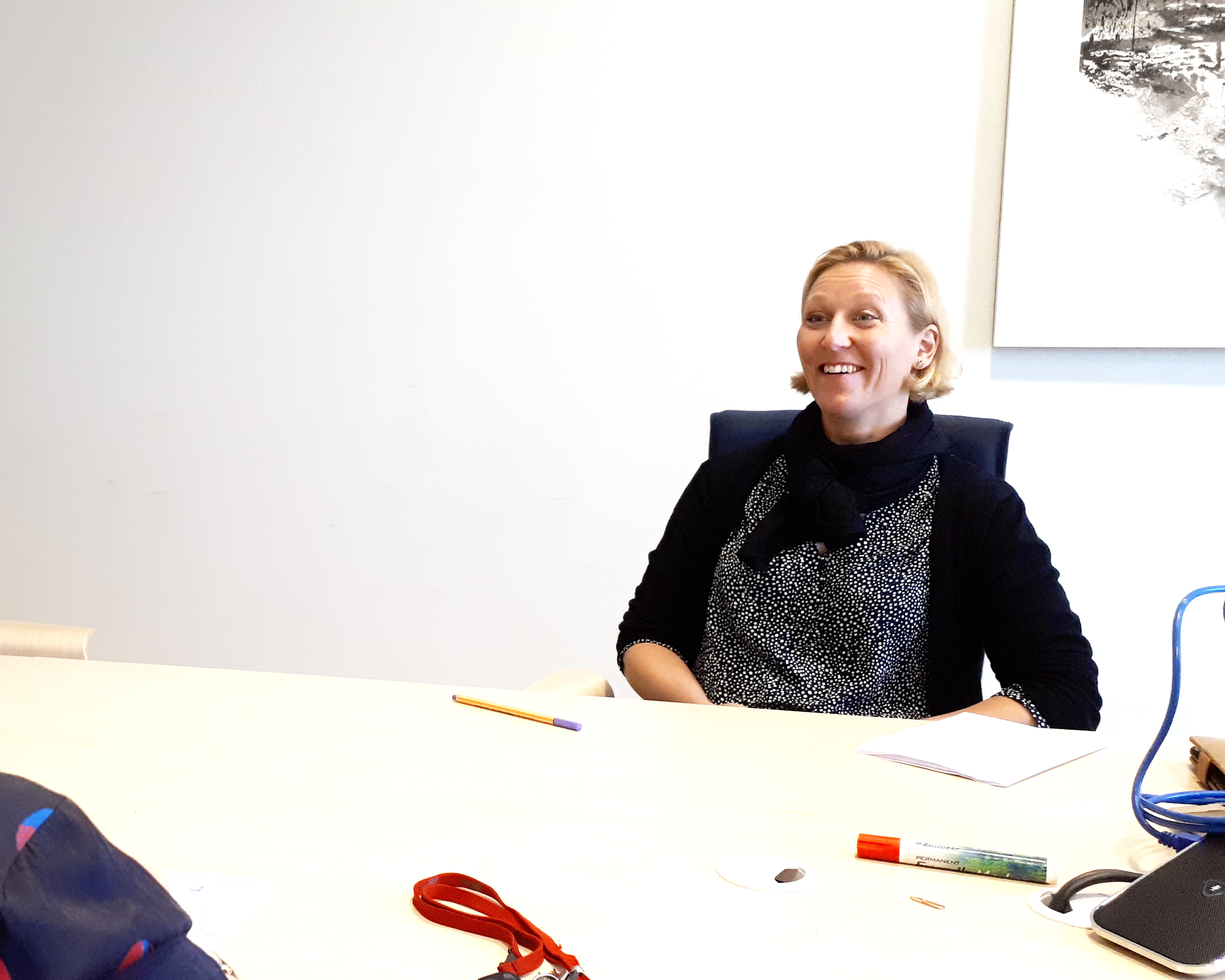Vice rector Paula Eerola and associate professor of geoinformatics Tuuli Toivonen discuss the Plan S declaration, open access incentives, research-data issues, data management and corporate collaboration. This is the abstract of the original posts, part 1 and part 2 (in Finnish).
The idea of the Think Open dialogue interview is simple: the interviewees raise the topics they consider important, and then they discuss those topics. In this interview, University of Helsinki’s new vice-rector Paula Eerola and associate professor of geoinformatics Tuuli Toivonen discuss topics related to open science and research infrastructures: the Plan S declaration, open access incentives, research-data issues, data management and corporate collaboration.
A more comprehensive version of the conversation between Eerola and Toivonen is available in Finnish in two parts: part 1 and part 2.

”Plan S is clearly heading in the right direction”
The conversation between Eerola and Toivonen starts with autumn 2018’s central issue, Plan S, which is a declaration of commitment by the group of European research funding organisations (cOAlition S). The key aim of Plan S is very exact and ambitious: ”By 2020 scientific publications that result from research funded by public grants provided by participating in national and European research councils and funding bodies, must be published in compliant Open Access Journals or on compliant Open Access Platforms.” The Academy of Finland has already announced that it will participate in cOAlition S.
Related to Plan S, Tuuli Toivonen raises the problematic theme of hybrid open access publications, whose problems are commonly known. In Plan S, hybrid journals are not considered an allowable venue for open access publication, but hybrid OA has been an essential open access component in FinELib consortium’s big deal agreements with scientific publishers, like the Elsevier deal this year.
TT: ”For a researcher the deal is great: there is a chance to publish free of charge (if affiliated in the University of Helsinki) in Elsevier’s high impact publication series. However, this is harmful for openness in publishing as this encourages publishing specifically in hybrid publications. This has sparked debates among scientists. Now I would like to hear about the University of Helsinki’s position on this issue – how does it approach Plan S?”
PE: “Plan S is clearly heading in the right direction. There are built-in flaws in hybrid OA publishing, as you said. The ten principles that are listed in Plan S are something we can support. However, what the plan does not deal with is the distribution of costs. It just presents in a very indeterminate way which actors are responsible for fulfilling the plan. The declaration in itself is welcome, but this is a complex question.”
How do we increase the value and quality of open access journals?
The transition to open access journals (i.e. gold OA journals) has been slowed by the fact that these publishing channels are not considered as valuable or attractive as subscription-paid journals. The Publication Forum rating (JUFO rating) is often pivotal. JUFO steers researchers toward certain publishing channels; the question is whether it could also direct researchers towards open access publications.
TT: ”In our field of geography, Applied Geography is the journal of the highest impact among geographers. However, its JUFO rating is 1, and from that point of view it is a weak journal. We’ve been trying to get its JUFO rating up for years. The JUFO rating could also direct researchers towards openness. The fact that the journal is open access would increase its JUFO rating.”
PE: ”That’s also problematic. In principle, the JUFO rating should be strictly quality based. The Ministry of Education and Culture is eager to have an additional category (in financing model) for open access publications, because JUFO ratings are utilized in university funding. I’m not excited about this sort of micromanagement. The fact that the publication reaches colleagues is usually the first criterion for publishing.”
TT: ”From the point of view of supporting openness, it is a problem that people are currently balancing whether the journal is open or it is well known. And at the moment, they are not the same thing.”
PE: ”It’s almost either-or.”
TT: ”Yes. And because merits in your research community weigh so much more heavily, there is a big difference between Nature or Applied Geography. The appreciation you receive is different, even if Applied Geography reaches colleagues. The fact that openness is not a merit in publishing directs researchers to publish in high impact series. Subscription-paid journals attract interesting articles, which strengthens the old structure. Open access publications will not be able to develop.”
PE: ”Yes, but our primary strategy must be to get these current high impact journals open by negotiating at a sufficiently high level.”
TT: ”If it happens, that would be the optimal situation.”

Companies possess data to change the world
Open science includes the idea that university-based knowledge should be widely used in society, including in companies (see Research cooperation for companies and communities at the University of Helsinki). On the other hand, corporations have a lot of data that interests scientists. However, the use of this data for research purposes is often challenging.
TT: ”In data negotiations with companies, I have noticed that we lack good models to interact with companies. It is often uncomfortable to make a disadvantageous deal with a company and spend a lot of time on something that is not at all your own expertise. Through DataSupport you get support from university lawyers, but we are still lacking good models.”
PE: ”That is really important, and I think things have changed quite quickly. I guess there is no one type of model for agreements or negotiations because companies are different and they have different interests in the use of data.”
Corporate cooperation also raises another question: Who possess the most relevant research data, and thus the best prerequisites for scientific research? And how open is this data?
PE: ”Companies also do a lot of research themselves. For example, in computer science the best researchers often work for Google and Amazon in their research departments.”
TT: ”One side of the issue is that companies create innovations and do internal research that goes at a different pace than public research. The other side is the societal development, which is the wildest thing here. Let’s consider, for example, urban development and the direction in which the Helsinki metropolitan area develops. Kesko corporation, the S Group and Amazon have large amounts of data on people’s behaviour. With that data companies have the tools to understand the future better than public actors.”
Research infrastructures also include people
Finally, Paula Eerola brings up research infrastructures – tools, services, or data as such – that enable research at different stages of the research process. The Academy of Finland has mapped nationally significant research infrastructures in its project, Finland’s roadmap for research infrastructures.
PE: ”Research infrastructures are increasingly linked up with data, and the Academy of Finland has been a forerunner in research data related issues. Currently, data management plans (DMP) are required for all Academy funded projects. When applying for research infrastructures you must include quite precise descriptions related to data: where it is and whether it is open to other researchers. Our researchers have not fully realized this, and surprisingly many researchers stumble on this data issue. The usual explanation is that there is no problem (in getting data) – just call me.”
TT: ”I think adding a DMP to the Academy’s application criteria was a bit unfortunate, even though I understand the Academy’s good intentions. The DMP provides an opportunity to think about open-science practices, and it reminds us that managing data is an important issue. However, the level of detail in the DMP form has been quite high, which has frustrated many people. As a result, data management planning has been perceived as a matter of performance, rather than something of real importance. As far as I know, the Academy’s intention has been to bring data management to the discussion, and to encourage universities to provide support for researchers on data related issues. And that is a very important thing. But, from the point of view of a researcher, the openness of data should not be an extra load to bear. Of course, well-managed data will also benefit your own research later, and this may not have been widely realized among scientists. Research infrastructures can support researchers in data management. Thus, from the point of view of my own research fields, the data infrastructure is not a device for acquiring data, but it is also a network of people.”
PE: ”It has always been so. People have only understood infrastructure as some kind of device.”
TT: ”In order for infrastructure to work, it’s important that there are people involved. For storing, opening and long-term preserving of data, we need professionals other than researchers. We have to consider how much time a researcher uses for archiving and how much support is provided.”
PE: ”I fully agree that there must be sufficient technical support for a researcher.”

